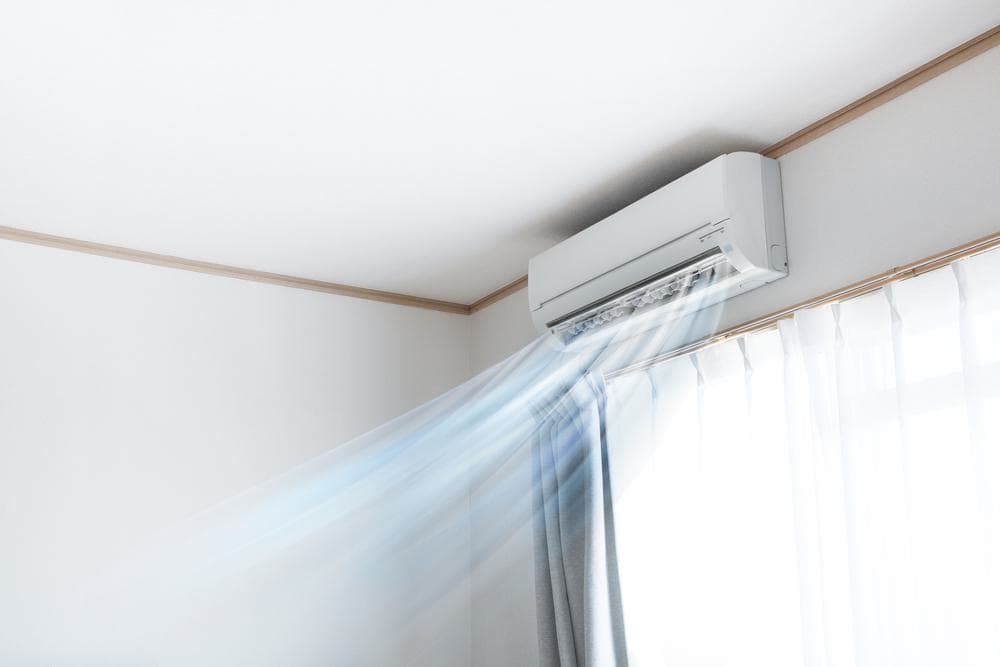
Installing a vertical air conditioner can be a daunting task, especially if you’re not familiar with the process. This in-depth guide will walk you through the entire process, from choosing the right location to connecting the indoor and outdoor units. We’ll provide detailed instructions, examples, and expert advice to ensure your installation goes smoothly.
Installing a vertical air conditioner involves several steps. First, choose the right window and prepare the area. Attach the top rail to the AC unit, create a support frame, and then install the air conditioner ensuring it’s level and secure. Seal any gaps between the AC unit and window frame with insulating materials. Secure the unit with screws and plug it into an electrical outlet. Always take safety precautions and follow the manufacturer’s instructions.
What is a Vertical Air Conditioner?
A vertical air conditioner, also known as a single package vertical air conditioner (SPVAC), is a type of air conditioning and heating equipment with its main components arranged vertically. These units are mainly used in modular classrooms, modular office buildings, telecom shelters, and hotels. They are typically installed on the outside of an exterior wall or in a closet against an exterior wall but inside the building.
Why Choose a Vertical Air Conditioner?
There are several advantages to choosing a vertical air conditioner over a traditional horizontal unit. First and foremost, these units save floor space due to their vertical orientation. This makes them ideal for small or narrow spaces. Additionally, vertical air conditioners offer a concealed installation, which can create a quieter and cooler living environment. They are also versatile and energy-efficient, with various capacities ranging from 1.5 to 100 tons, making them suitable for different applications and room sizes.
Preliminary Steps Before Installation
Before you begin the installation process, there are several preliminary steps to consider. These include measuring the window opening, checking the window’s condition, determining if a support bracket is needed, identifying the type of window, gathering necessary tools and materials, considering the size of the room, checking the energy efficiency rating, and inspecting the insulation requirements.
Tools and Materials Needed
For the installation of a vertical air conditioner, you will need the following tools and materials:
- Measuring tape
- Air conditioner (window unit)
- Support bracket
- Screwdriver and power screwdriver
- Foam weather stripping
- Caulking gun and caulk or waterproof sealant
- Utility knife
- Power drill
- Torpedo level
- Tape measure
- Sturdy stool or bench
Step-by-Step Installation Guide
- Choose the right window: Select a suitable window for the air conditioner installation. Most window AC units are designed for single and double-hung windows, but you can adapt the installation for a sliding window.
- Prepare the window and surrounding area: Remove any storm windows or screens from the selected window. Clean the window sill and surrounding area to ensure a secure fit for the air conditioner.
- Attach the top rail to the AC unit: Follow the manufacturer’s instructions to attach the top rail to the air conditioner. This will help secure the unit in place when installed in the window.
- Create a support frame: Since window air conditioners are not designed for sliding windows, you’ll need to create a support frame to hold the unit in place. You can use 2x4s, deck screws, and plywood to construct a simple frame that fits the dimensions of your window.
- Install the air conditioner: Carefully slide the air conditioner into the support frame, ensuring it is level and secure. You may need to add additional support, such as a wood block or bracket, to keep the unit stable.
- Seal the gaps: Use foam weatherstripping or other insulating materials to seal any gaps between the air conditioner and the window frame. This will help prevent drafts and improve the efficiency of the unit.
- Secure the unit: Run a screw or two through the lip of the air conditioner to secure it in place. The weight of the unit should keep it stable, but this extra step provides additional insurance.
- Plug in the air conditioner: Connect the appliance cord to an appropriate electrical outlet and turn on the air conditioner to ensure it is functioning properly.
Safety Precautions During Installation
During the installation process, it’s important to take several safety precautions. Always read the manual or instructions that come with the equipment, wear appropriate protective gear, check the power source, protect and tape uninsulated wiring and terminals, locate and avoid power lines and other wires, and follow proper equipment installation procedures.
Maintenance and Troubleshooting
Once your vertical air conditioner is installed, it’s crucial to properly maintain it to ensure it runs efficiently and lasts as long as possible. This includes cleaning the exterior, cleaning the air filter, inspecting and cleaning the evaporator and condenser coils, straightening the fins, vacuuming the interior cabinet, cleaning the drain system, checking for proper installation, and storing the unit properly when not in use.
If you encounter any issues after installation, follow our troubleshooting guide to identify and resolve common problems.
With this comprehensive guide, you should now have all the information you need to install a vertical air conditioner. Remember, always consult the manufacturer’s instructions for your specific model, as installation procedures may vary. Happy cooling!
Frequently Asked Questions
What are some of the specific models of vertical air conditioners?
The blog does not specify any particular models of vertical air conditioners. However, popular manufacturers include brands like Trane, Carrier, and Friedrich which offer a range of vertical air conditioners.
How often should I clean the air filter of my vertical air conditioner?
The frequency of cleaning your air conditioner’s filter depends on how much you use it and the air quality in your area. However, a general rule is to clean or replace your air filter every 1-3 months during peak usage.
Can I install a vertical air conditioner in a casement window?
Most vertical air conditioners are designed for single and double-hung windows. However, some models can be adapted for installation in a casement window. Always check the manufacturer’s instructions to ensure compatibility.
Do I need a professional to install a vertical air conditioner?
While this guide provides a step-by-step procedure to install a vertical air conditioner, it’s always a good idea to consider professional installation, especially if you’re not comfortable with DIY projects. Professional installers have the necessary experience and tools to ensure the unit is installed correctly and safely.
What is the energy efficiency rating and why is it important?
The energy efficiency rating, or EER, is a measure of how much cooling a unit delivers for each watt of electricity. The higher the EER, the more efficient the air conditioner. Choosing a unit with a high EER can save you money on energy costs in the long run.












